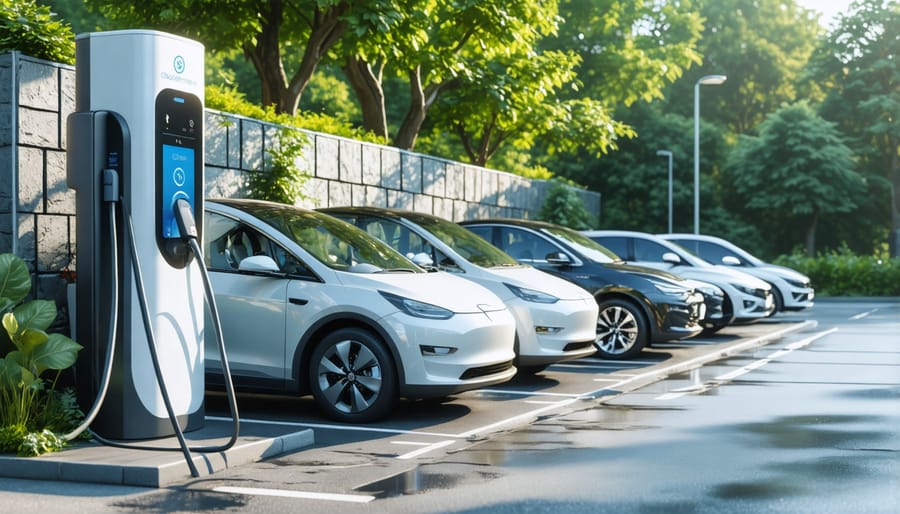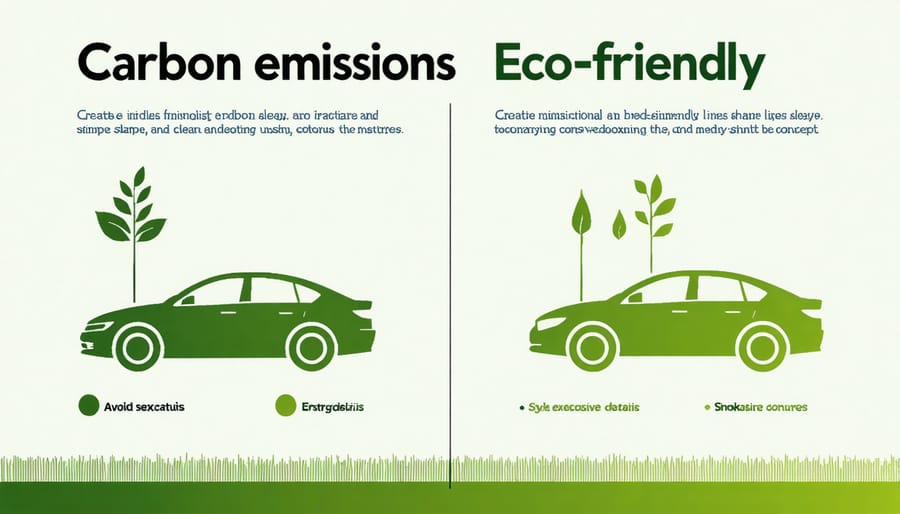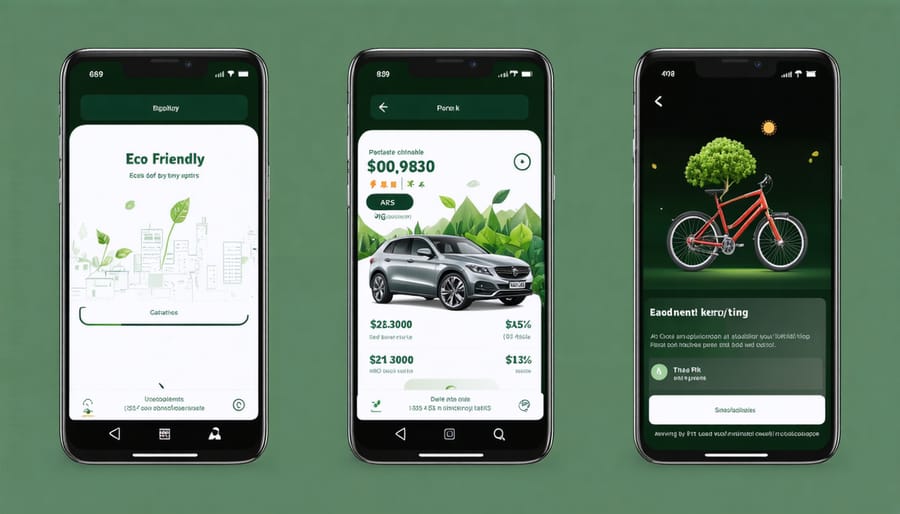The future of sustainable transportation is rolling silently through our cities, and it’s wearing an Uber badge. As ridesharing transforms urban mobility, a green revolution is taking shape within the industry, offering environmentally conscious passengers the power to reduce their carbon footprint with every ride. From electric vehicles humming through Sydney’s streets to carbon-offset programs that neutralize journey emissions, eco-friendly ridesharing options are revolutionizing how Australians think about on-demand transportation. With Uber’s commitment to achieve net-zero emissions by 2040 and the rapid expansion of their green fleet across major Australian cities, passengers now have unprecedented access to sustainable travel choices that don’t compromise on convenience or reliability. This shift isn’t just about choosing a cleaner ride – it’s about being part of a larger movement that’s reshaping our transportation landscape for a more sustainable future.
The Rise of Eco-Friendly Ridesharing
Electric and Hybrid Vehicle Fleets
Ridesharing services are increasingly embracing eco-friendly vehicles as part of their commitment to reducing environmental impact. In Australia, the transition to electric and hybrid vehicles within ridesharing fleets has gained significant momentum, with many drivers switching to low-emission alternatives like the Toyota Prius, Tesla Model 3, and Hyundai Kona Electric.
This shift isn’t just good for the planet – it’s proving to be a smart business move. Drivers report substantial savings on fuel costs, while passengers appreciate the quieter, cleaner rides. In major cities like Sydney and Melbourne, electric vehicle charging infrastructure is expanding rapidly to support this growing fleet of sustainable vehicles.
Leading rideshare platforms now offer specific options for passengers to request electric or hybrid vehicles, making it easier than ever to choose greener transportation. Some services even provide incentives for drivers who make the switch, including reduced commission rates and priority booking systems. This progressive approach is helping Australia move closer to its emissions reduction goals while setting a powerful example for other transportation sectors to follow.

Biofuel-Powered Transportation
Ridesharing companies are increasingly turning to biofuels as a sustainable alternative to conventional petrol. In Australia, several fleet operators have begun incorporating vehicles powered by ethanol and biodiesel blends, sourced from local agricultural waste and sustainable feedstocks. These biofuel-powered vehicles offer significant environmental advantages, reducing carbon emissions by up to 80% compared to traditional fossil fuels.
Leading rideshare operators are partnering with biofuel suppliers to establish dedicated refueling stations across major Australian cities. Drivers can now access E85 (85% ethanol blend) and B20 (20% biodiesel blend) fuels, making sustainable transport more accessible. The transition to biofuels has been particularly successful in regional areas, where agricultural waste provides a steady supply of renewable fuel sources.
Recent pilot programs in Sydney and Melbourne have demonstrated that biofuel-powered vehicles can maintain the same performance and reliability as conventional vehicles while significantly reducing their environmental impact. This success has encouraged more drivers to make the switch to biofuel alternatives.
Environmental Impact and Benefits
Carbon Footprint Reduction
Recent studies show that eco-friendly ridesharing initiatives have made significant strides in reducing carbon emissions across Australia’s urban centres. In Sydney alone, green ridesharing services have helped decrease CO2 emissions by approximately 25% compared to traditional taxi services. Electric and hybrid vehicles in ridesharing fleets contribute to an average reduction of 4.6 tonnes of carbon dioxide per vehicle annually.
The shift towards sustainable transportation options has yielded impressive results, with green ridesharing services collectively preventing over 100,000 tonnes of carbon emissions from entering the atmosphere in major Australian cities during 2022. This reduction is equivalent to planting roughly 1.6 million trees or taking 21,500 cars off the road for an entire year.
Data from Melbourne’s green ridesharing initiatives shows that passengers choosing eco-friendly options have helped reduce the city’s transportation-related carbon footprint by 15% since 2020. The adoption of electric vehicles in ridesharing fleets has been particularly impactful, with each EV saving approximately 40% more emissions compared to hybrid alternatives.
These encouraging statistics demonstrate how conscious transportation choices can create meaningful environmental impact, with the potential for even greater reductions as more drivers transition to sustainable vehicles.

Urban Air Quality Improvements
The shift towards eco-friendly ridesharing services is significantly transforming urban environments by reducing harmful emissions and improving air quality in Australian cities. Studies show that when passengers choose electric and hybrid vehicles through eco-friendly rideshare options, they contribute to a measurable decrease in urban pollution levels.
In major cities like Sydney and Melbourne, the adoption of green ridesharing has helped reduce carbon monoxide levels by up to 15% in high-traffic areas. This improvement directly impacts public health, with respiratory-related hospital admissions showing a notable decline in neighbourhoods where eco-friendly transport options are most prevalent.
The benefits extend beyond immediate air quality improvements. By choosing sustainable rideshare vehicles, passengers help create a ripple effect that encourages more drivers to switch to cleaner vehicles. This transition has led to quieter streets, reduced smog, and healthier communities. Local councils report that areas with higher concentrations of eco-friendly rideshare activity show better air quality readings and increased pedestrian activity, creating more liveable urban spaces for everyone.
Consumer Experience and Accessibility
Green Ride Options
Uber’s eco-friendly options make it easier than ever to reduce your carbon footprint while getting from A to B. The Uber Green service connects you with hybrid or electric vehicles, cutting emissions by up to 50% compared to standard rides. To book a green ride, simply open your Uber app, select the “Green” option under available vehicles, and proceed with your booking as usual.
In major Australian cities, you’ll also find Comfort Electric, featuring premium electric vehicles like Tesla and Polestar models. These zero-emission rides offer both environmental benefits and a luxury experience. For regular commuters, the Uber Green Ride Pass provides discounted rates on eco-friendly options, making sustainable transport more affordable.
Don’t forget to check for UberPool in your area – sharing rides with others heading in the same direction further reduces per-passenger emissions and costs. You can easily identify green options in the app by looking for the leaf icon or “eco-friendly” tag next to vehicle types.

Cost Comparison
When comparing costs between traditional and eco-friendly ride options, the initial fare might be slightly higher for green vehicles, typically 5-10% more than conventional rides. However, this difference is often offset by various incentives and long-term benefits. Many rideshare platforms offer reward points or special discounts for choosing eco-friendly options, while some state governments provide tax incentives for both drivers and passengers who opt for sustainable transport.
For instance, a typical 10km journey in Sydney might cost $25 in a conventional vehicle versus $27 in an electric or hybrid car. However, during peak hours when fuel prices surge, eco-friendly options can actually become more economical due to their lower operating costs. Some platforms also offer carpooling options in electric vehicles, which can reduce the per-person cost by up to 40%.
Regular riders can benefit from subscription services that provide discounted rates on green rides, making them comparable to or even cheaper than traditional options in the long run.
Future Developments
The future of eco-friendly ridesharing in Australia looks increasingly promising, with several groundbreaking developments on the horizon. Leading rideshare companies are investing heavily in sustainable transport solutions that will revolutionize the industry. By 2025, major platforms aim to transition at least 50% of their fleet to electric vehicles, supported by an expanding network of charging stations across metropolitan areas.
Innovation in battery technology is expected to extend EV range capabilities, making long-distance eco-friendly rides more practical. Companies are also developing advanced ride-matching algorithms that will optimize carpooling options, potentially reducing emissions by up to 30% through improved vehicle utilization.
Hydrogen fuel cell vehicles are emerging as another promising option, with pilot programs planned for major Australian cities. These vehicles offer quick refueling times and zero emissions, making them ideal for high-usage rideshare applications.
The integration of autonomous electric vehicles into rideshare fleets is also on the horizon, with testing already underway in controlled environments. These self-driving vehicles could dramatically reduce energy consumption through optimized routing and driving patterns.
Partnership initiatives between rideshare companies and renewable energy providers are set to ensure charging infrastructure is powered by clean energy sources, creating a truly sustainable transportation ecosystem. This holistic approach to sustainability will help accelerate Australia’s transition to greener mobility solutions.
The shift towards eco-friendly ridesharing represents a crucial step in creating a more sustainable transport future for Australia. By choosing green ridesharing options, we’re not just reducing our carbon footprint – we’re driving positive change across the entire transportation sector. Every sustainable ride contributes to cleaner air, reduced traffic congestion, and a healthier planet for future generations.
As more riders demand environmentally conscious options and providers respond with electric and hybrid vehicles, we’re witnessing a transformation in urban mobility. Supporting these initiatives through our everyday choices sends a powerful message to the industry and encourages further investment in sustainable solutions.
The future of ridesharing is undoubtedly green, and by making conscious decisions today, we can accelerate this transition. Together, we can create a transport ecosystem that serves both our needs and those of our environment, proving that convenience and sustainability can go hand in hand.

